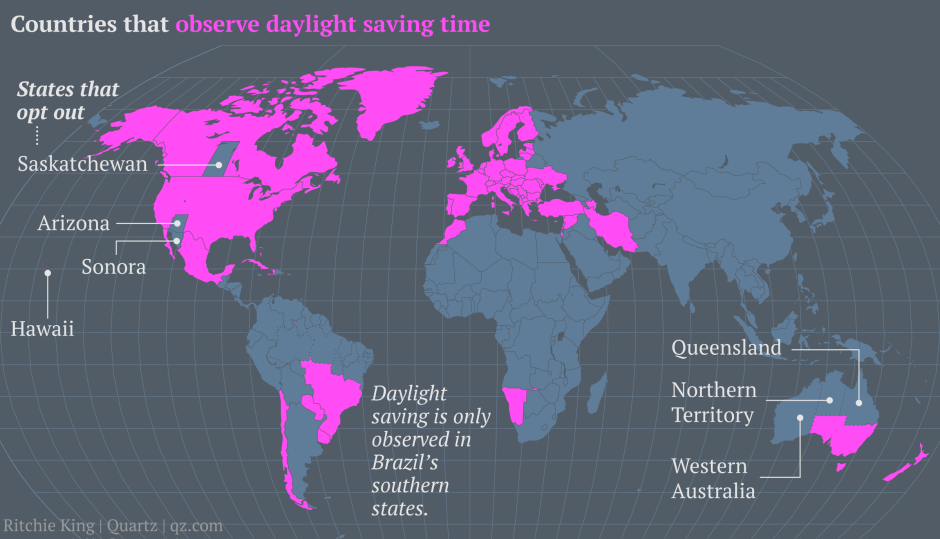Daylight savings is a mixed bag. I really don’t know why we still do it. For church folk we love falling back because everyone gets to church when it actually starts, but hate springing forward because people miss church all together. I jest, when people arrive at church. (I do notice how many church remind people about springing forward on social media but no one reminds people when we fall back) I don’t joke however when it comes to my dislike for daylight savings time. If I had a vote I would vote not just for the ending of daylight savings time but I would go a step further and get rid of a few time zones while we are at it. I got the idea from this very intriguing article
Daylight saving time in the US ends Nov. 3, part of the an annual ritual where Americans (who don’t live in Arizona or Hawaii) and residents of 78 other countries including Canada (but not Saskatchewan), most of Europe, Australia and New Zealand turn their clocks back one hour. It’s a controversial practice that became the official standard in America in 1966 and adjusted throughout the 1970s with the intent of conserving energy.. The fall time change feels particularly hard because we lose another hour of evening daylight, just as the days grow shorter. It also creates confusion because countries that observe daylight saving change their clocks on different days.
It would seem to be more efficient to do away with the practice altogether. The actual energy savings are minimal, if they exist at all. Frequent and uncoordinated time changes cause confusion, undermining economic efficiency. There’s evidence that regularly changing sleep cycles, associated with daylight saving, lowers productivity and increases heart attacks. Being out of sync with European time changes was projected to cost the airline industry $147 million a year in travel disruptions. But I propose we not only end Daylight Saving, but also take it one step further.

